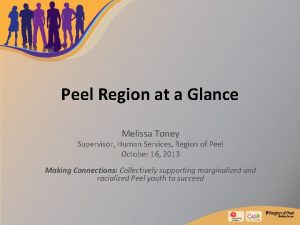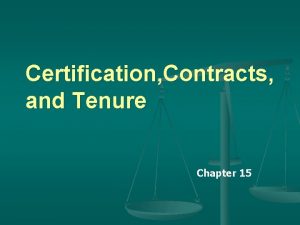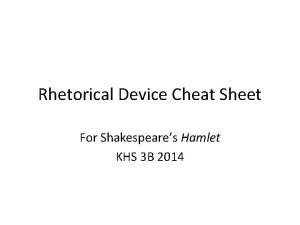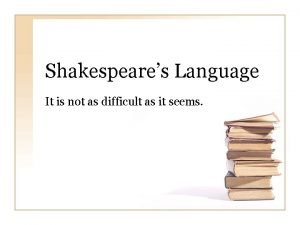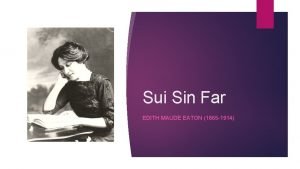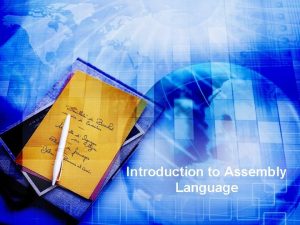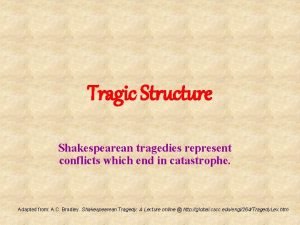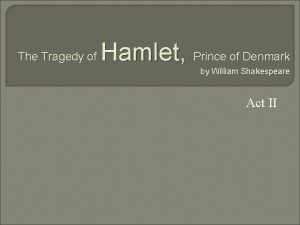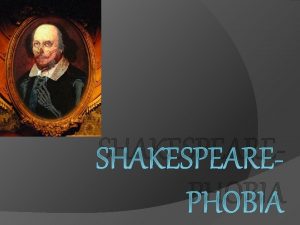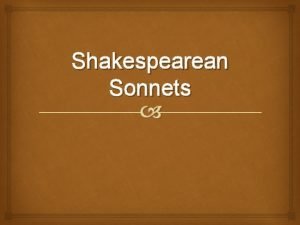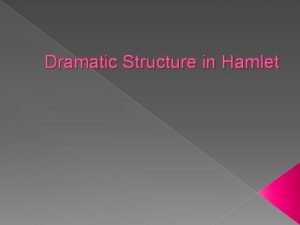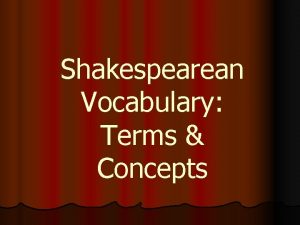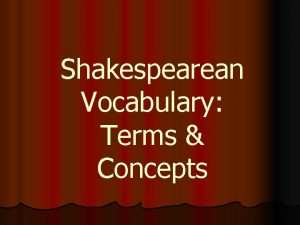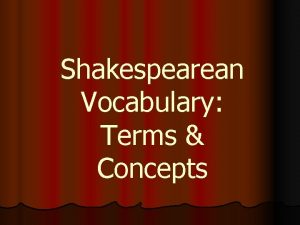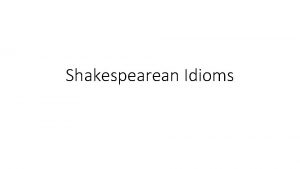Intro to Shakespearean Poetry Language Mrs Toney Spring













- Slides: 13

Intro to Shakespearean Poetry & Language Mrs. Toney Spring 2011

Rhythm in Poetry l Like music, language has rhythm l In poetry, this is a pattern of stressed and unstressed syllables l Meter is the pattern of rhythm established by a poem l dependent not only on the number of syllables in a line but also on the way those syllables are accented

Types of Meter in Poetry The rhythmic unit is made up of one stressed syllables, and one or or two unstressed ones. l This is called a “foot” l The 3 types of feet are: l Iamb (re. SIST) l Trochee (ABsent) l Spondee (GOAL LINE) l l Number of Feet in a line: 3 = Trimeter l 4 = Tetrameter l 5 = Pentameter l

Shakespeare Uses Iambic Pentameter A foot may be iambic, which follows a pattern of unstressed/stressed syllables l For example, read aloud: "The DOG went WALKing DOWN the ROAD and BARKED. “ l l l Because there are five iambs, or feet, this line follows the conventions of iambic pentameter (pent = five), the common form in Shakespeare's time. Stressed syllables are labeled with a "/" mark and unstressed syllables with a "U" mark.

Shakespearean Sonnets l Sonnets are a form of poetry that follow a very specific formula. l They are written in blank verse (10 syllables) using iambic pentameter

Elizabethan/Shakespearean Sonnets Poem consisting of 14 lines l Has a very specific rhyme scheme: ABAB CDCD EFEF GG l Written in iambic pentameter l Each line contains 10 syllables. l The words in each line make a pattern where an unemphasized (soft) syllable is followed by an emphasized (strong) syllable. l l Sonnets are often love poems, but they don’t necessarily have to be.

Sonnets l In short, Shakespearean sonnets have: l 14 lines total which are made up of: l 3 quatrains l Stanzas with 4 lines each l 1 couplet l Stanzas with 2 lines each

Sonnets, yay!


The Language of R & J l The prologue is a sonnet l The rest of the play is written in blank verse l Blank verse = type of poetry with meter, but no rhyme l Much of the play is also written in iambic pentameter l In other words, this is a play that is written like a poem, that reads like a story!!

The Language of Shakespeare l ‘anon: soon; right away l aught: anything l coz: cousin; close friends l ere: before l e’er: ever l god-den: good evening l God gi’ go-den: God give you a good evening l hence: from here

Elizabethan Words to Know l hie: hurry l hither: here l marry: a short form of “by the Virgin Mary” and so a mild exclamation l morrow: morning l naught: nothing l o’er: over l prithee: pray for thee, or please l Sirrah: a term used to address a servant

More Elizabethan Terms to Know l soft: be still; quiet; wait a minute l thither: there l whence: where l wherefore: why l wot: know l yond, yonder: over there
 Melissa toney
Melissa toney Proof of tenure
Proof of tenure Shakespearean language cheat sheet
Shakespearean language cheat sheet Shakespearean words
Shakespearean words They are mrs garcia and mrs castro
They are mrs garcia and mrs castro They are mrs garcia and mrs castro
They are mrs garcia and mrs castro Mrs. darling was ___________ of mrs. s.
Mrs. darling was ___________ of mrs. s. Edith eaton
Edith eaton Spring, summer, fall, winter... and spring (2003)
Spring, summer, fall, winter... and spring (2003) What months are fall
What months are fall Introduction to poetry billy collins theme
Introduction to poetry billy collins theme Assembly language introduction
Assembly language introduction Structure of a shakespearean tragedy
Structure of a shakespearean tragedy Man delights not me
Man delights not me
